One of the most fascinating aspects of anime is how each series builds its own anime power system, a set of rules, energies, and techniques that define combat and shape the story. From mystical life forces to supernatural abilities, these systems aren’t just flashy mechanics; they reflect deeper philosophies and themes within their worlds. In this article, we will talk about the most famous anime power systems, exploring how they work.
List of 10 anime power systems explained
Ki in Dragon Ball
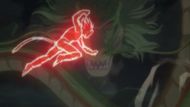
Dragon Ball’s main anime power system is based on the ancient Chinese concept of chi (or ki in Japanese). Ki manipulation allows individuals to enhance their strength, speed, agility, and durability, or release it in the form of devastating energy attacks like beams and bombs.
Ki can be divided into three components:
- Genki - one’s health and vitality (used in the Spirit Bomb).
- Yūki - courage and fighting spirit.
- Shōki - right-mindedness or clarity of mind.
There are also three main types of ki:
- Mortal Ki - ordinary life energy, like Goku or Krillin’s.
- Evil Ki - malicious life force, like Frieza’s.
- God Ki - divine energy, undetectable by mortals, used in forms like Super Saiyan God.
Transformations like Super Saiyan multiply ki output, making it central to Dragon Ball’s evolution of power. Beyond the series, ki inspired many later anime systems that focus on life energy as a source of strength.
Chakra in Naruto
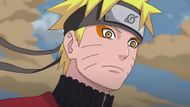
Naruto’s chakra system blends physical stamina with spiritual energy. By molding chakra through hand seals, ninjas perform techniques called jutsu.
The main categories include:
- Ninjutsu - elemental and versatile combat techniques (like Fireball Jutsu).
- Genjutsu - illusory techniques that manipulate perception.
- Taijutsu - martial arts powered by chakra-enhanced strength.
Chakra has affinities tied to five basic elements: fire, wind, lightning, earth, and water. Some clans possess kekkei genkai (bloodline abilities), such as the Uchiha’s Sharingan. Because chakra is finite, overuse can exhaust or even kill a ninja, making chakra management crucial in battle.
Stands in JoJo’s Bizarre Adventure
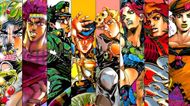
Replacing the earlier ripple (Hamon) system, stands are physical manifestations of their users’ psyches. Each stand possesses a unique ability, ranging from fire manipulation (Magician’s Red) to healing (Crazy Diamond). Stands often take humanoid shapes but can also manifest as objects, animals, or even entire vehicles.
Stands are typically awakened by being pierced with the Stand Arrow, a relic made from a mysterious meteorite. Once acquired, the power passes through a family’s bloodline. Stands are ranked by attributes like speed, power, and range, but their signature ability is what truly defines them. JoJo’s stands are not only creative but also symbolic reflections of their users.
Quirks in My Hero Academia
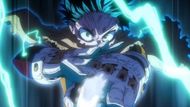
In the world of My Hero Academia, nearly everyone is born with a quirk, a genetically inherited superpower. These abilities vary wildly, from controlling fire to having extra limbs.
Quirks fall into three main types:
- Emitter Quirks - generate or manipulate energy/substances (Bakugo’s explosions).
- Transformation Quirks - alter the body temporarily (Kirishima’s hardening).
- Mutant Quirks - permanent physical mutations (Tsuyu’s frog-like body).
There’s also the rare accumulation-type quirk, such as One For All, which stores and passes on power through generations. Quirks embody the idea of individuality in society, while also exploring how powers can define or limit one’s identity.
Devil Fruits and Haki in One Piece
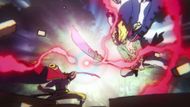
One Piece introduces Devil Fruits, mysterious fruits that grant superhuman abilities at the cost of the user’s ability to swim. They come in three main types:
- Paramecia - versatile powers that alter the body or environment.
- Zoan - transformations into animals or hybrids.
- Logia - elemental powers that allow the user to become and control natural forces.
Later, Haki was revealed as a counterbalance, representing one’s willpower. Its three forms are:
- Observation Haki - sensing presence, intent, or even glimpsing the future.
- Armament Haki - hardening the body or weapons to bypass Devil Fruit defenses.
- Conqueror’s Haki - overwhelming others’ wills, knocking out weaker opponents.
Together, Devil Fruits and Haki create a balanced yet limitless system that ensures creativity in battles.
Nen in Hunter x Hunter
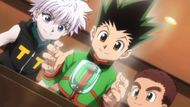
Nen is one of the most complex and admired anime power systems. It is the art of using one’s aura (life energy). Nen has six primary categories:
- Enhancement - strengthens body or objects (Gon).
- Emission - projects aura outward (Razor).
- Manipulation - controls objects or beings (Illumi).
- Conjuration - materializes objects from aura (Kurapika’s chains).
- Transmutation - alters aura’s properties (Killua’s electricity).
- Specialization - unique abilities outside the other five (Neon’s fortune telling).
Nen’s brilliance lies in its rules and restrictions. Users can create self-imposed limitations to increase power, like Kurapika’s vow to only use his chains against the Phantom Troupe. This makes Nen both flexible and thematically rich.
Cursed Energy in Jujutsu Kaisen
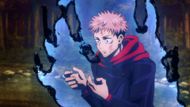
Jujutsu Kaisen’s power system revolves around cursed energy, which is born from negative emotions. Sorcerers manipulate cursed energy to enhance physical combat or fuel cursed techniques, unique abilities tied to the individual.
Key mechanics include:
- Reverse Cursed Techniques - converting negative energy into positive energy for healing.
- Binding Vows - contracts that impose conditions to amplify strength.
- Domain Expansion - creating a barrier space where one’s cursed technique is guaranteed to hit.
Cursed energy reflects humanity’s darker side, making battles not just physical but also psychological.
Reiatsu in Bleach
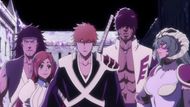
Bleach uses reiryoku (spiritual energy) and reiatsu (spiritual pressure). All spiritual beings possess reiryoku, but its intensity determines their strength.
Shinigami (Soul Reapers) channel this energy through zanpakutō, swords that embody their soul. Each sword has a unique ability, revealed through its releases:
- Shikai - the initial release.
- Bankai - the ultimate form, vastly increasing power.
Other groups, like Hollows, Quincies, and Fullbringers, also manipulate reiryoku differently. What ties them together is the sheer variety of spiritual combat, with reiatsu often determining who dominates a battlefield.
Breathing Styles in Demon Slayer
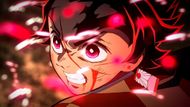
Demon Slayer’s power system is based on Breathing Styles, swordsmanship techniques that enhance the user’s body through controlled breathing.
All styles originate from Sun Breathing, the original form, which then branched into elemental variations:
- Flame, Water, Wind, Stone, and Thunder Breathing - the five core elements.
- Derivative styles like Love Breathing or Mist Breathing evolved from these bases.
Visually, the elements are symbolic, representing how the user perceives their attacks. This makes Demon Slayer’s combat both artistic and tactical.
Devils in Chainsaw Man
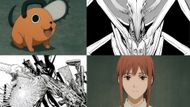
Chainsaw Man anime introduces Devils, supernatural beings born from humanity’s fears. The strength of a devil depends on how strongly people fear its concept; for instance, the Gun Devil is terrifyingly powerful.
Humans can form contracts with devils, trading something valuable (like years of life) for their abilities. There are also hybrids (like Denji, part human and part devil) and fiends (devils inhabiting human corpses). This system thrives on the idea that fear itself is the ultimate source of power.
